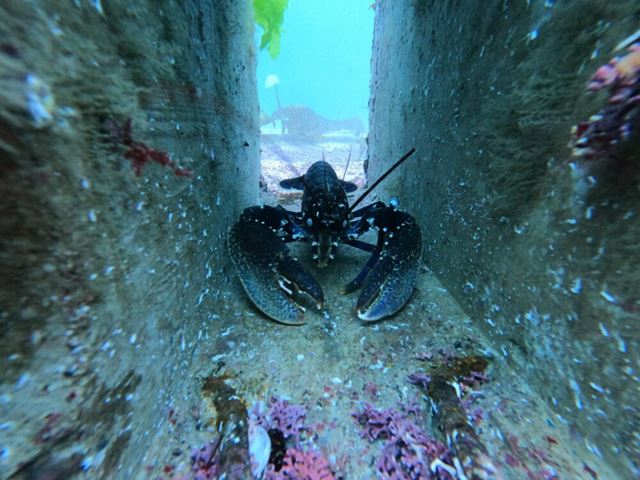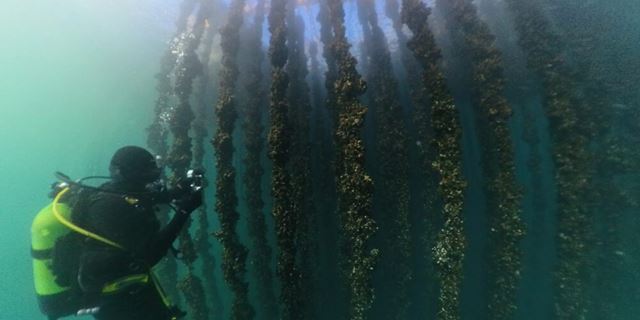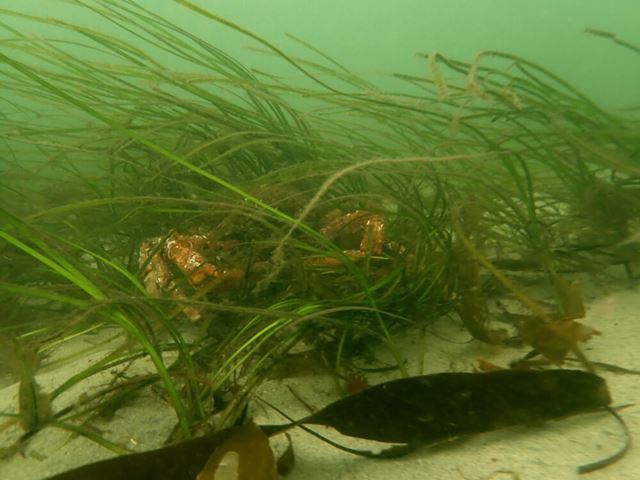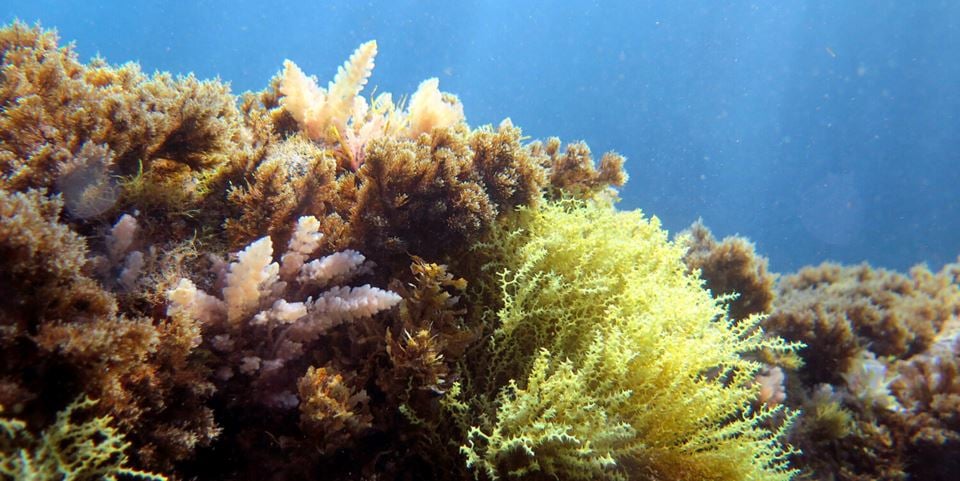Immediate action is important for successful marine restoration, scientists conclude.
“The human activity that threatens marine ecosystems is expected to increase in the coming decades. This impacts not only nature itself, but also the ability of coastal communities to adapt to climate change,” says Ida B. Øverjordet, a SINTEF senior research scientist.
Sixty-six percent of the world’s coastal areas have already been changed and damaged. Seabed fishing methods, like bottom trawling, damages almost five million square kilometres of the seabed every year.
Other threats, such as marine debris and chemical pollution, disrupt ecosystems and threaten marine diversity.
Oil and gas drilling usually cause damage in specific areas. However, accidents like the Deepwater Horizon oil spill in 2010 have had serious and lasting effects on deep-sea wildlife. Seabed mining is also expected to increase, which could affect large parts of the ocean.
The scientists’ results show that great progress can be made by restoring heavily impacted areas, even when not all stressors can be removed.

SINTEF research scientist Ida B. Øverjordet in Svalbard, which is one of the demonstration areas in the Climarest project. Photo: Private
Conservation may not be enough
The UN’s 2030 Agenda for Sustainable Development aims to protect and restore 30 percent of the marine environment by 2030. The EU project Climarest, coordinated by SINTEF, is working with scientists to develop different solutions for marine restoration.
Their results were recently published as part of an article in Nature. The article presents an analysis of 764 restoration projects across different global marine habitats. The analysis shows an average success rate of 64 percent.
“The human-induced activity that is threatening marine ecosystems is expected to increase in the coming decades.
“Conservation alone isn’t always enough to reverse the current degradation of specific habitats and restore functioning ecosystems overall,” says Roberto Danovaro, a professor at the Marche Polytechnic University in Ancona, Italy.
He explains that ecological restoration is crucial. This involves restoring habitat-forming species such as seagrass meadows, mangroves, kelp forests and coral reefs.

Hostile? A sea urchin approaches a starfish in Madeira. In Norway too, marine ecosystems are being destroyed by sea urchins that graze down kelp forests. Photo: Susanne Schäfer/Climarest
Habitat-forming species create or form habitats for other species.
“More coastal habitats need to be restored because of their critical role in ecosystem processes in the ocean,” says Simonetta Fraschetti, a professor at the University of Naples.
Passive restoration involves removing impacts and letting nature recover on its own. It can help degraded habitats recover.
“Conservation alone isn’t always enough to reverse the current degradation of specific habitats and restore functioning ecosystems.
“But,” Danovaro says, “full recovery through passive restoration can take between 100 and 200 years – especially in places where habitat-forming species need a long time to establish themselves.”
Active restoration measures might include stabilizing the seabed or introducing habitat-forming organisms, which can significantly accelerate recovery.
Success stories as catalysts for action
Restoration efforts have proven successful for many different types of habitats, including deep-sea ecosystems. It has been particularly successful for salt marshes, coral reefs and other habitat-forming species.
“In our project work, we show that new approaches to marine ecosystem restoration make it possible to scale up efforts to larger geographic areas. An increasing number of success stories demonstrate effective restoration of different habitat types,” says Fraschetti.
These success stories contribute to a global “blue restoration plan” and make new, affordable technologies more realistic.
“Success stories from marine ecosystem restoration are crucial to motivating society and private actors to invest,” says Danovaro.

Several countries are experiencing declines in lobster populations. Scientists are now trying to restore the European lobster (Homarus gammarus) population, including by building artificial reefs on the project’s reefs at the demo site in Spain. Photo: Climarest
Danovaro explains that this finding could change the current approach to restoring marine ecosystems. It shows that active restoration work can start immediately without waiting for the environment to improve.
What is needed for successful marine restoration?
To understand what supports habitat recovery, the researchers analysed a dataset of 618 case studies. They identified several key factors for success:
- The restoration method is the most important factor.
- Ongoing maintenance of restored habitats is the second most important factor. This highlights the need for collaboration with local groups such as fishermen and dive centres for effective follow-up after measures have been implemented.
- Careful site selection is the third factor. Success rates are higher when the sites have a connection to similar habitats, provide protection for species sensitive to climate change, and are protected from disturbances such as waves, erosion, and sedimentation.
- The fourth most important factor is the establishment of buffer zones. There may be marine protected areas and areas with fishing restrictions around the restored site. These reduce the impact of human activity.
The researchers also learned when restoration failed completely – that is, with a zero survival rate. This occurred when environmental conditions were unsuitable, extreme events caused mass deaths or when the wrong methods or species that were not adapted to the environment were chosen.

The Spanish researchers in the project are collaborating with local aquaculture centres to restore the seabed under mussel ropes. Photo: Climarest
Political and financial support needed
The study shows that successful restoration of marine ecosystems depends on three main types of support: political and regulatory, financial, and technological support.
Political and regulatory support involves establishing rules and commitments to restore damaged habitats. This includes international initiatives such as the UN-initiated Decade on Ecosystem Restoration (2021-2030), national laws like the EU Nature Restoration Law and local regulations like the Polluter-Pays Principle (PPP).
Facts about the project:
- Parts of this research have been carried out in Climarest, an EU-funded research project.
- The project has 18 partners from countries along the western coast of Europe.
- SINTEF coordinates the project and leads the dissemination activities.
- The project is part of the EU's societal mission "Restore our Ocean and Waters 2030."
Financial support involves recognizing the social, economic and cultural value of investing in restoration. Public funding remains the main source. However, private companies increasingly see ecosystem restoration as a smart investment. It creates new jobs and environmentally friendly innovations.

Marine restoration: Seagrass can form important habitats for crabs. Photo: Ricardo Bermejo/Climarest
Technological support involves the development of tools and methods that can work for all types of marine habitats and on a large scale.
“All these forms of support are crucial to successfully restore marine ecosystems. And they are absolutely necessary, considering the degradation of marine ecosystems that is currently taking place,” says Fraschetti.
An important element
Researchers in the Climarest project are developing and testing solutions for restoring marine ecosystems on a large scale along the coast at five demonstration sites in the Arctic-Atlantic region, including Svalbard. The solutions will later be implemented in several locations, including the Baltic Sea and the Mediterranean.
In the process, the emphasis is on monitoring the effectiveness of the measures to promote future investments.
“This study is an important element for planning and predicting the success of our demos,” says Ida B. Øverjordet, the project coordinator at SINTEF.
Reference: Assessing the success of marine ecosystem restoration using meta-analysis, Nature > Nature Communications, 2025.


